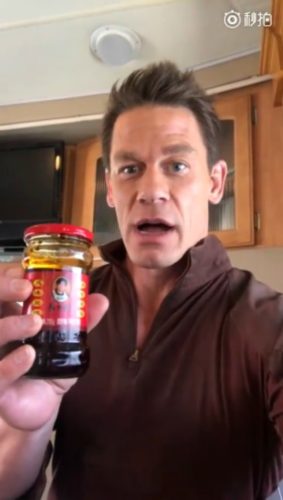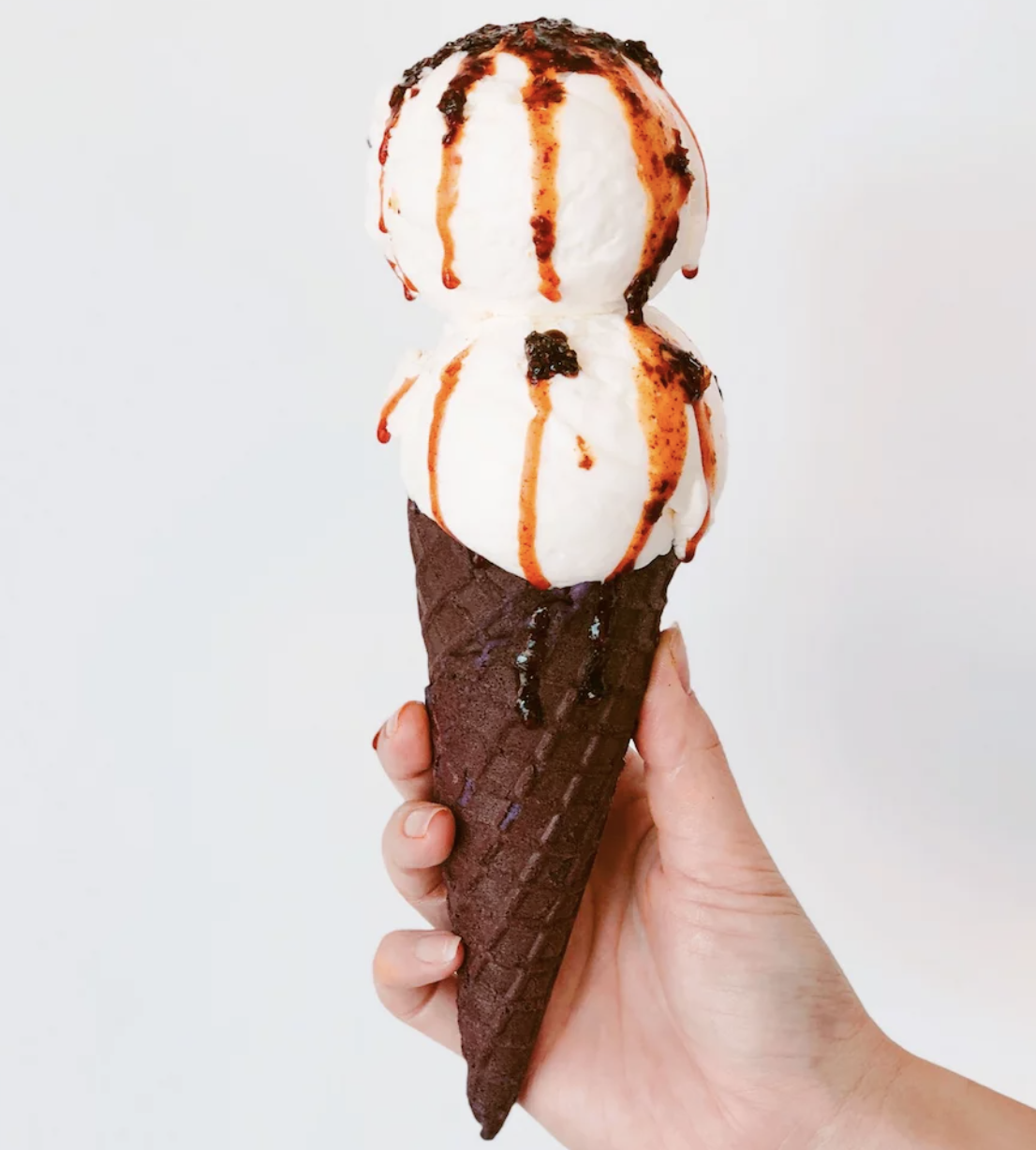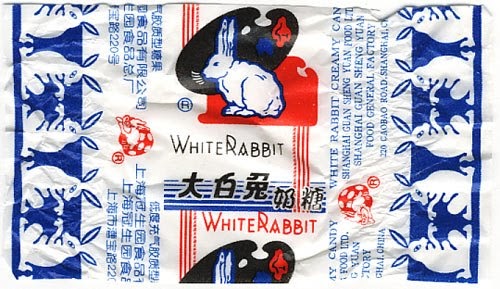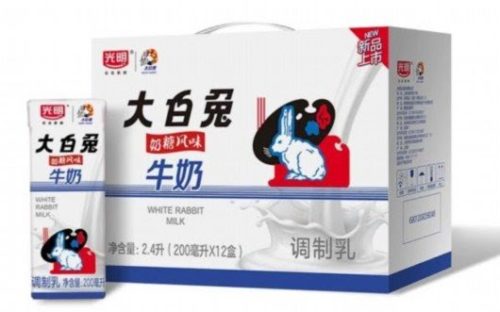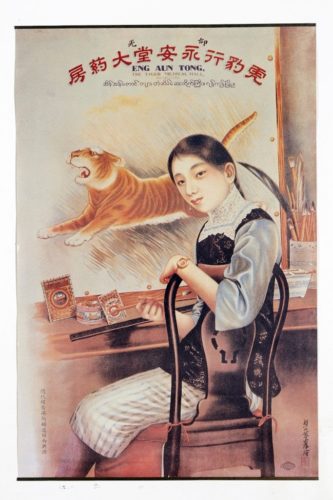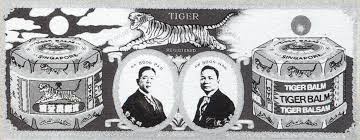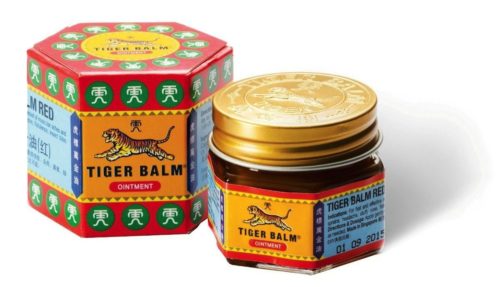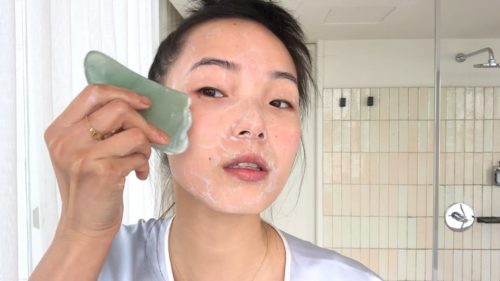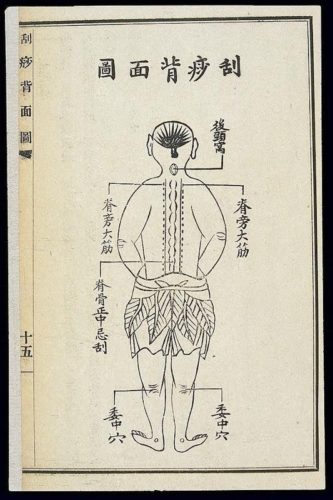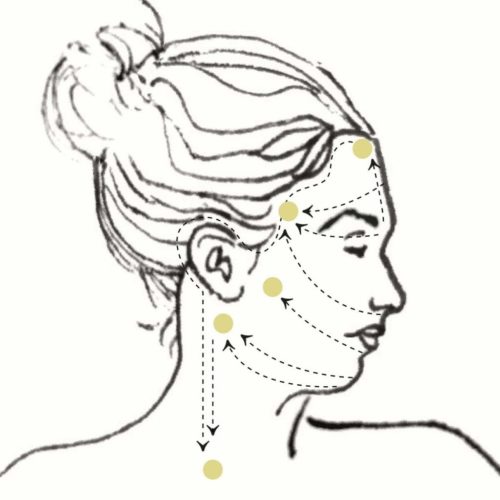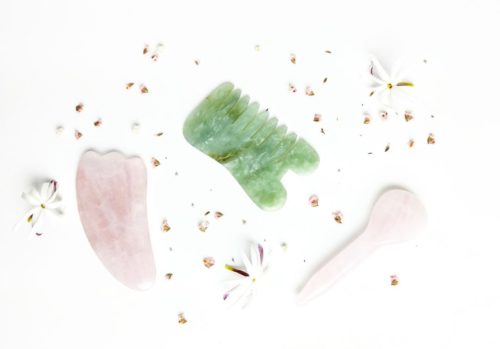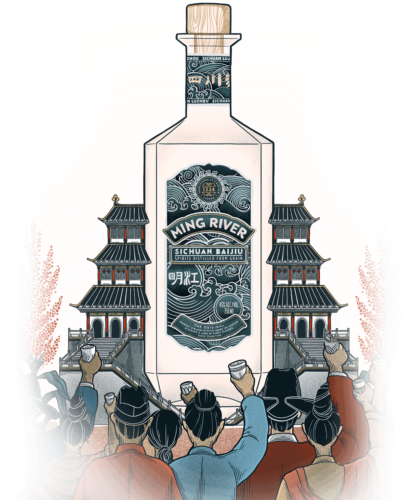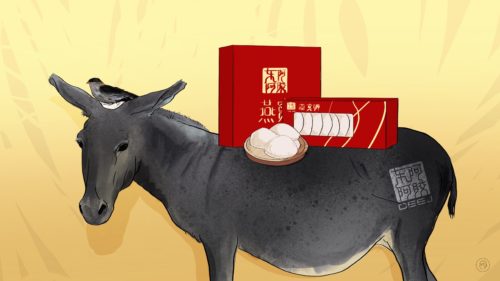Chinese cult classics for the Western world
From a hot sauce endorsed by John Cena to a candy gifted to Richard Nixon, here are five items that those in the Chinese diaspora all know — and which the wider world is gradually getting to know as well.

What makes something a “cult classic?” After all my research, I realized that there was one commonality with the items in the list below: they are associated memories that are poignant and comforting, whether personal or collective. In one way or another, for those in the Chinese diaspora, these “cult classics” will remind them of “home,” and sometimes history. This is precisely the reason these classics are still celebrated, revered, and being discovered to this day.

The world’s favorite hot sauce
Lǎo Gān Mā 老干妈 — literally, “old godmother” — is a crunchy, spicy, highly addictive condiment doused on noodles, rice, and any dish that has gone awry. It’s made from oil, fried onions, garlic, chiles, peppercorns, and, of course, MSG, which gives the sauce its deep, rich umami flavor.
If one isn’t compelled by the sauce’s spectacular crunchy heat, perhaps one will be by its origin story:
Our godmother, Tao Huabei, was a poor and illiterate widow living in Guizhou, a province between the spice meccas of Sichuan, Hunan, and Yunnan. Tao opened up a noodle shop to support her family, with her patrons soon flocking for her homemade hot sauce. Eventually, she turned the noodle shop into a hot sauce shop. That shop became a factory, a business, a global name, and now it’s an empire. Tao is now one of the most successful entrepreneurs in China, with her company averaging half a billion USD per year. Tao also appears on the label of Lao Gan Ma, looking stoic and a little pissed, just as the patron saint of hot sauce should be.
Lao Gan Ma is the most-used sauce in China. By numbers alone, it is the world’s most popular hot sauce — and it can be found in countries around the world, brought there by immigrants wanting a taste of home, people of other cultures stumbling upon the sauce in a specialty food store, or those who have repatriated from China and craving the unique crispy heat after eating at a beloved noodle restaurant. Popular Western publications from New York Magazine to Taste Cooking have sung their praises for Lao Gan Ma, furthering the sauce’s reach to hip foodies and adventurous home cooks all over the U.S.
One of Lao Gan Ma’s most vocal fans is none other than John Cena, who discovered the sauce while filming in China. He went on Weibo to speak about his intense love for the sauce, all in immaculate Mandarin, which was as charming as it was comedic of a tribute.
And of course, to be revered means to be imitated. Danny Bowein, chef of Mission Chinese and author of its companion cookbook, has a recipe for an elevated version of the sauce. And the company Fly by Jing, founded by Los Angeles-based chef Jenny Gao, has made her own riff on the sauce, called Sichuan Chili Crisp, which you might’ve seen in trendy specialty stores or on Instagram ads. It’s a 100 percent natural alternative without MSG (though as you should all know by now: MSG isn’t actually unhealthy, though it is synthetic) that gets its umami flavor from mushroom powder, seaweed, and fermented black beans. They say it’s so good that you can eat it on ice cream.
It’s very possible that in the future, many Americans will discover Lao Gan Ma through its many imitators, and want to try the OG for themselves.
Maybe someday Lao Gan Ma will be as common as sprinkles on soft serve. But for now: take a spoonful, mix into whatever breakfast, lunch, dinner in front of you, and enjoy that crispy heat.

The candy of childhood dreams
White Rabbit Candy (大白兔奶糖 dà bái tù nǎi táng) is like a Chinese tootsie roll, with a creamy vanilla taste wrapped in a thin starchy edible rice paper (half the fun of eating these sweets as a kid is the constant shock when you bite into the paper and thinking you made a mistake, only to be met with a soft, dissolving sugar coat). It’s got a chewiness that makes your mouth water, and a fantasmic art deco-inspired design evoking the serene landscape of folk tales.
The candy originated in Shanghai at the ABC Candy Factory in 1943. It was inspired by the British cream candies that were all the rage at the time. At first, to make it seem even more Western, the candies were called Mickey Mouse sweets and featured the cartoon mouse. However, in the 1950s, the factory became state-owned, and it became taboo to use Western iconography. The mascot became a naturalistic, hand-drawn rabbit, which more closely mirrored eastern styles of folk art.
In the early days of the Cultural Revolution, ABC had a monopoly in the candy market. Sugar supply was low, and demand was high, with people even parking outside of the factory and waiting in line. Some of the candy’s popularity can also be attributed to its slogan, “Seven White Rabbit candies is equivalent to one cup of milk,” which made it seem healthy instead of, well…candy. College students used to dissolve the candy in hot water to make “hot milk,” which they drank in their dorms as a supposedly nutritious snack.
Typically, White Rabbit is given out as treats during major holidays like Chinese New Year and Autumn Festival, which has made the treat closely linked to a sense of nostalgia and celebration. Over the years, the Chinese government has reinforced this emotional tie and has wanted to share it far and wide. On National Day in 1959, the 10th anniversary of the People’s Republic of China, the government passed out the candy as gifts to its citizens. In 1972, Premier Zhōu Ēnlái 周恩来 gifted President Richard Nixon a bag of White Rabbit, thus introducing it into the Western world. And in 2013, President Xí Jìnpíng 习近平 visited the new factory in southern Shanghai. That same year he gifted the sweets to officials and children while visiting Mongolia, showing how integral White Rabbit is to China’s collective identity and consciousness, and how important it is for China to share this treat with the rest of the world.
Today, you can find White Rabbit candy in any Asian supermarket, and you can buy phone cases, clothing, and in milk form, which is sure to make some parents nostalgic for the days of their youth.

China’s cure-all
Every culture has a cure-all. China’s is Tiger Balm, a potent aromatic salve that has a texture and color akin to petroleum jelly. It works through simultaneously delivering heating and cooling sensations, like Vicks VapoRub (though Tiger Balm is much more powerful). When I was younger, my mother would put it on anything that brought me discomfort: when I was carsick she would rub it on my temples, an itchy mosquito bite was calmed by a dab of the sticky stuff, and stress could be relieved by simply smelling it. The list goes on.
Though the smell of camphor, eucalyptus, and menthol might evoke images of ancient herbalists and thousand-year-old clay vessels, tiger balm is a fairly new remedy.
In the 1860s Aw Chu Kin, an herbalist for the Emperor’s court, set off to start his own medicine shop in Rangoon, where he sold a potent ointment that brought relief to all ailments. Aw Chu Kin died in 1908, leaving his business in the hands of his two sons: Aw Boon Haw (meaning “gentle tiger”) and Aw Boon Par (meaning “gentle leopard”). Aw Boon Haw was in charge of marketing and decided to call the ointment “tiger balm.”
This brand is probably so popular today because from the beginning the company, Haw Par Corporation, was slick with marketing and protective of its brand. At the start, the brothers would hand out free samples, traveling around with a cart and giving willing patrons dabs of the ointment and asking for their feedback, which helped them perfect the recipe. In addition, they’ve been protective with trademarking, so you won’t easily find dupes. Even medicines like “cheetah balm” or “lion balm” will land someone in a lawsuit.
While everyone in China, Thailand, and Malaysia knew tiger balm intimately and had vivid memories associated with it, but it was slow to gain traction in the Western world. There was no American grandma stocking tiger balm canisters in her medicine cabinet, or some beloved schoolteacher who always smelled faintly of the signature scent.
The current executive director, Han Ah Kuan, decided to do a major push for Americans, who didn’t have any emotional ties with the product. He enlisted the help of pro football players to promote the brand, and subsequently created specialty tiger balm products for sports-related maladies, such as tiger balm patches that can be applied to specific areas and a tiger balm specifically for the neck and shoulder area. What longtime fans might notice most, however, is the logo change, which has gone from an image of a resting tiger to one of a leaping tiger, reinforcing the idea that tiger balm is a salve for the active person.
And the branding is really working. Lady Gaga described Tiger Balm as a backstage “must have” on Twitter, health haven Goop has declared it a “topical cure-all balm for muscle aches and pains.” And David Beckham said his mom gave it to him to rub on to his temples when he had a headache.
Tiger Balm has survived because of its marketing, but thrives because it has proven its efficacy for generations, with communities around the world relying on its healing powers. Whether it reminds you of simpler times or is really just what you need to get through the day, the balm has its place in the hearts of many.

An ancient secret to beauty
Guā shā 刮痧 is one of the oldest traditional Chinese medicine (TCM) practices, which has recently experienced a surge in popularity in beauty industries around the world. Gua sha, which loosely translates to “scraping bruises/redness” (there is no direct translation for the second character, sha), is the practice of scraping the skin to get rid of maladies associated with blood stasis. Through scraping in concerted motions, areas are stimulated to produce more blood flow, leading to cell regeneration and recovery. Usually, gua sha on the body will result in red bruises on top of the skin. They say that the redder the subsequent bruises, the more toxicity has been released.
Now, you might see skincare-obsessed YouTubers, facialists, and beauty bloggers all lauding the benefits of facial gua sha as a means to make skin firmer and more supple, and decrease signs of aging. These are all indeed benefits of gua sha, but were not a part of the practice’s original intent.
Gua sha might date back as far as the Paleolithic Age, starting off as a means to help people who fell unconscious (often from heat stroke), using a stone or piece of a horn to stimulate blood circulation and bring more oxygen into the blood. Since then, the practice has been refined, with people using smooth spoons or pieces of carved stone for the process. For most Chinese people, they would associate gua sha as a means to help with signs of overheating or to help stave off a virus. The facial benefits of the practice were discovered by pure accident, and now are being honed by TCM practitioners and skincare enthusiasts alike. For facial gua sha, one uses a gentler motion upwards on the face, resulting in lymphatic drainage, increased blood flow, and less puffy skin. It’s now a go-to for facialists around the world, from Hong Kong to Brooklyn, with many skincare brands selling their own tools as a companion to their serums.
And now, you can find gua sha tools basically anywhere, even in Urban Outfitters clearance bins.
But why now? Gua sha has been around for centuries, but hasn’t been so fully embraced until very recently. Aestheticians believe that its surge in popularity correlates with the “Clean Beauty Movement,” where consumers are seeking products without harmful side effects or harsh chemicals, which instead use organic and sustainable ingredients. As people begin to approach their lifestyles more holistically through exercise, cleaner diets, and more sustainable choices, their beauty routines follow suit. Before, many would once try a slew of chemicals for a youthful glow, but now see the benefits of using oils and other natural or homeopathic treatments. In addition, the popularity of using crystals for healing perfectly coincides with gua sha. Now, you can find gua sha tools cut from a variety of stones and crystals, each boasting their own energetic properties.
And gua sha is extremely affordable. Once you have the tool, you’re in business. It’s a low-risk, high-reward option for those interested in natural skincare remedies, making it the perfect jumping-off point for alternative treatments.

The world’s most divisive liquor
If we’re going to talk about Chinese classics, we have to talk about báijiǔ 白酒.Whether you enjoy this fragrant liquor with an elaborate banquet meal or with friends during a night of partying, you likely have an opinion on it; baijiu is as controversial as it is beloved. It also might be the most despised liquor in the world, and if you’ve tried it, you might know why.
Baijiu is a clear grain alcohol usually distilled from fermented sorghum, a type of ancient grain, and is very, very strong. Because of its distinct fermentation process, which doesn’t use yeast like many other alcohols, baijiu has a distinct — some would say rancid — taste, which comes from the beverage often being more savory and umami than sweet.
Traditionally, baijiu is drunk in huge quantities, shot after shot, during a raucous and long feast. You clink your glass and drain cup after (small) cup. If you’re Chinese, you might associate the drink with your red-faced grandpa and uncle at a family gathering, or with a class reunion that led to a string of bad decisions. As Anthony Bourdain once said about the beverage: “You’re going to drink a little more than you like, and you can’t refuse.” What a way to start an evening.
Though the drink is still unknown or niche for most Western imbibers, baijiu is actually the world’s most consumed and best-selling spirit. How? Well, it’s the same logic of Lao Gan Ma: the most consumed spirit in China is going to be the most consumed spirit in the world. And Chinese people really like to drink baijiu. Unlike at a dinner party in the U.S., where people might order individual cocktails with their meal, in China all are expected to partake in baijiu shots. In addition, since baijiu is usually consumed with meals, it’s not a go-to drink at bars, which is more what Western drinking culture revolves around.
Now there’s a push to make baijiu the next big thing in the West. There’s World Baijiu Day, where Chinese brands give people from all around the world the chance to try and hopefully fall in love with the drink (usually as a mix-in for a fruity cocktail). And though it’s still considered a specialty liquor, baijiu is served in bars around the world, in Buenos Aires, London, New York, Stockholm, etc. — the list goes on.
Western imbibers might be able to experience it as something pleasurable, rather than adventurous, in the near future. Ming River is producing a Sichuan-style baijiu that is more palatable for Western drinkers. It’s even being used in slushies at the popular restaurant Mala Project in New York City. And then there’s Vinn Distillery, a Portland-based and family-owned business creating artisanal baijiu with both classic and specialty flavors.
Though this might not sway your opinion on baijiu, it’s important to remember that the liquor’s quality test is similar to moonshine’s. Bad moonshine is really, really bad, worse than bad wine or cheap tequila. Baijiu is the same. Good moonshine can be sweet, complex, and easy. And so can baijiu.
Maybe baijiu isn’t quite a “Wester” classic yet, but it’s certainly cult, halfway there, contested as much as it is beloved. As vehemence for it grows, loyal followers become even more enthusiastic and appreciative of this thing they treasure, whether because of its history, vivid memories, or a prevailing culture.


